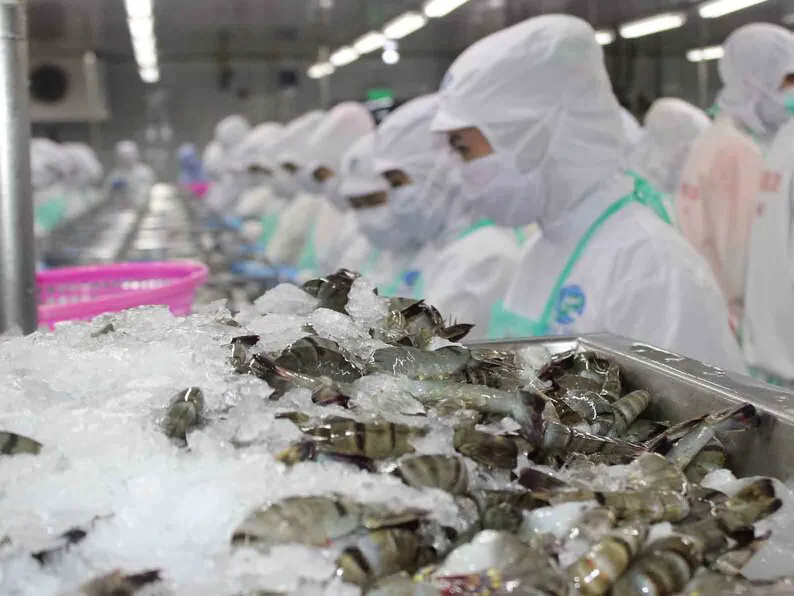Room remains large for Vietnam to increase exports to EU
The EU is the second largest import market in the world, accounting for 14.9% of total global imports, and Vietnam’s second largest export market.
With Vietnamese goods currently only account about 2% of the EU’s imports, the room to increase exports to this market remains large with the presence of EU – Vietnam Free Trade Agreement (EVFTA), according to Bao Viet Securities Company (BVSC).
| Vietnam seafood products are among major beneficiaries of EVFTA. |
One month after the EVFTA took effect, export of many Vietnamese products has risen considerably to the EU market.
Since early August, seafood export has increased about 10% compared to July, with shrimp and squid making up the largest growth. In August, shrimp exports to the EU were estimated to increase by 20% year-on-year.
Right after the EVFTA came into force, Vietnam's frozen black tiger shrimp started enjoying 0% tax rate, instead of 4.2% GSP rate (developed countries’ preferential tax rate for developing countries) applied earlier.
Accordingly, many EU exporters have sought more shrimp sources from Vietnam. By the end of August 2020, Vietnam's shrimp exports reached about US$2.6 billion, up 8% over the same period in 2019. However, the Covid-19 pandemic has exerted a great impact on the importers as well as the EU people's shrimp consumption habits.
Therefore, to attract more EU consumers, Vietnamese seafood products need to be certified with traceability, food safety and hygiene, stated BVSC.
In August 2020, local competent authorities issued over 7,200 sets of EUR.1 certificates of origin (C/O) to eligible Vietnamese products worth US$277 million that would be shipped to 28 EU countries. Goods that have been granted EUR.1 C/O are mainly footwear, seafood, plastic and plastic products, coffee, textiles, bags, suitcases, vegetables, rattan, bamboo, and knitting products, among others.
The EU is the second largest import market in the world, accounting for 14.9% of total global imports, and Vietnam’s second largest export market.
The EVFTA, officially signed in June 2019 after six years of negotiations, has been dubbed “the most ambitious” FTA the EU has ever reached with a developing country, according to the EC. It includes not only the almost full elimination of bilateral tariffs, but also a substantial reduction of non-tariff barriers. Moreover, it includes provisions to protect intellectual property, labor, environmental standards, and fair competition, while promoting regulatory coherence.
A pre-Covid-19 study from Vietnam’s Ministry of Planning and Investment suggested the EVFTA and EVIPA would help Vietnam’s GDP grow an additional 4.6% and boost the country’s exports to the EU by 42.7% by 2025.
Meanwhile, the European Commission estimated EU’s GDP would be added US$29.5 billion by 2035, along with additional growth of 29% in exports to Vietnam.












